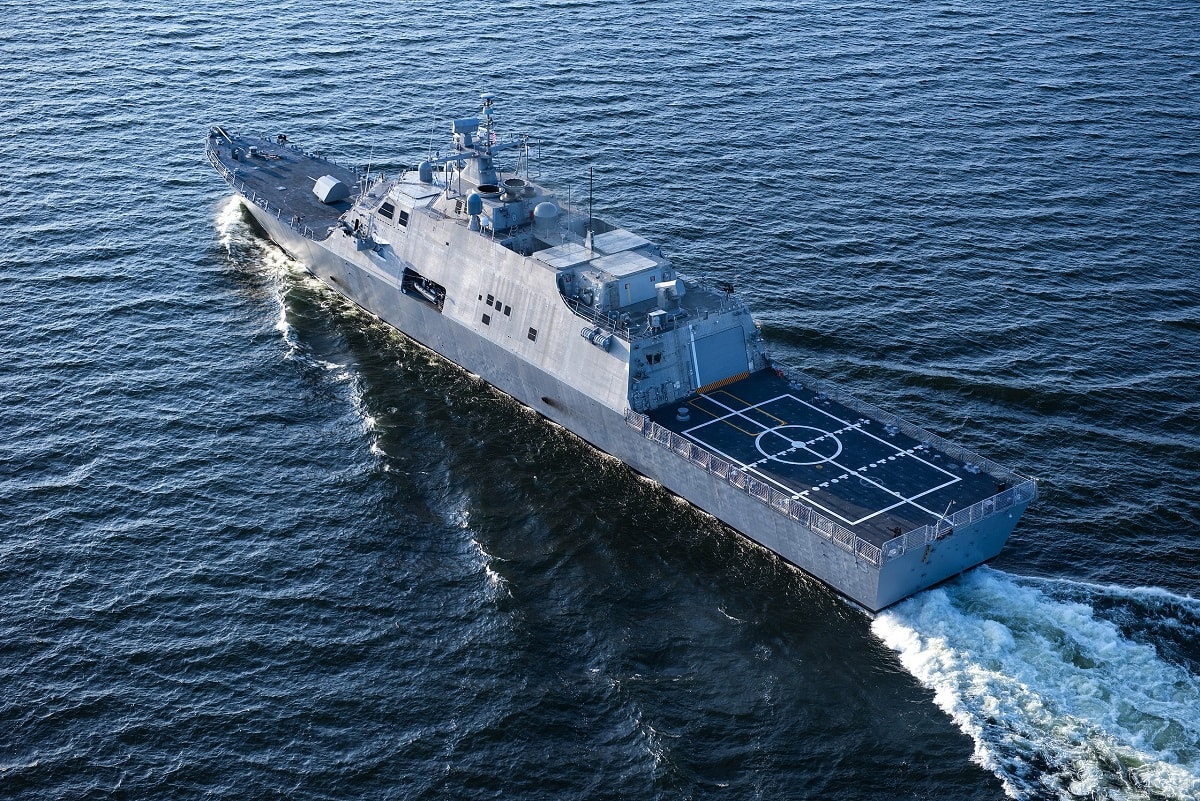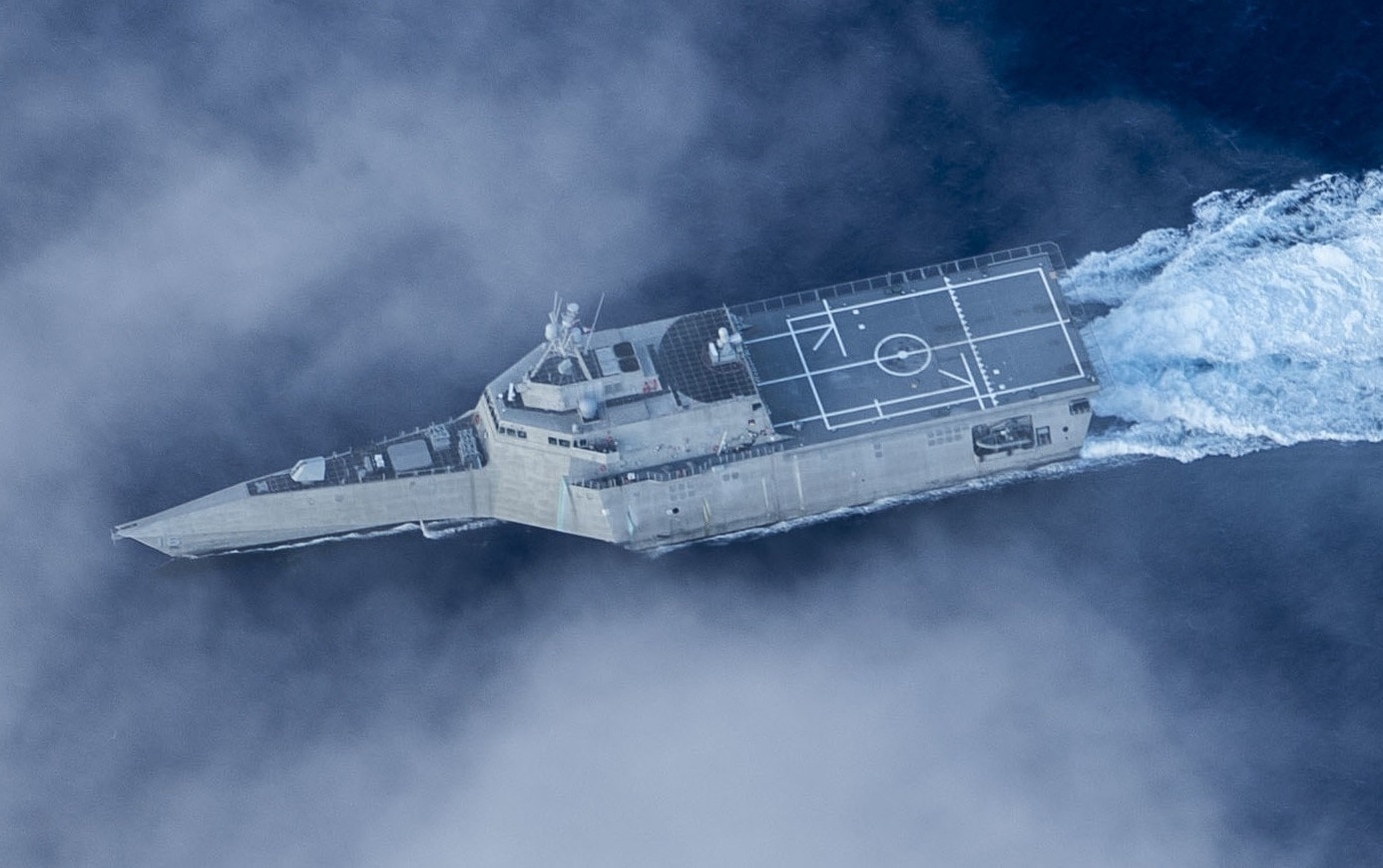A thought experiment: suppose the U.S. Marine Corps were looking for a winsome amphibious transport—let’s call it a “light amphibious warship” (LAW)—to help marines vault from island to island to pummel hostile fleets. Suppose these warships didn’t yet exist, and Congress seemed leery of procuring them. And suppose the U.S. Navy had light vessels on hand—call them “littoral combat ships” (LCS)—that were more or less a wasting asset. Technological woes held these vessels back from performing the missions they were designed to perform. Yet they were capacious and fleet-of-foot enough to ferry troops around.
The sea services might conclude a marriage of convenience that suited both partners. The U.S. Marine Corps needs light transports to execute operational concepts that go by names like Expeditionary Advanced Base Operations and Littoral Operations in a Contested Environment. The Navy needs a mission for its littoral combat ships. A match!
Marines now envision using swarms of light craft rather than hulking yet vulnerable amphibious transports to move troops around. The fleet riding the waves would work in concert with missile-armed marine units ashore to deny an antagonist—chiefly China’s People’s Liberation Army Navy, or PLAN—control of the sea. American sea denial would frustrate China’s goals in wartime, all of which—occupying Taiwan, enforcing sovereignty in the South China Sea, seizing the Senkaku Islands—demand that the PLA control crucial waters.
Once the U.S. Navy and Marine Corps, working with the U.S. Air Force and allied air and sea forces, denied the PLAN control of the sea, they would enjoy the leisure to amass sufficient power on the scene to wrest away control of the sea for themselves. And to do with maritime command whatever allied leaders deemed strategically and politically expedient to win.
Small craft are better suited than large “gators” to evade enemy fire during island-hopping operations. Better still, they have the advantage of being cheap and thus plentiful. Hostile air and missile strikes could take out a light transport. They probably would take out a few. But only a small percentage of the force’s overall combat power would be packed into each individual hull. The rest of the force would soldier on, having only lost that small percentage of its strength. Hence the marines’ quest for light amphibious warships.
The U.S. Navy, on the other hand, has built two classes of littoral combat ship intended to perform one mission at a time, namely anti-surface, anti-air, or anti-submarine warfare. Engineers would bolt on a “mission module” enabling an LCS to perform each function. An eminently sound concept for a flotilla of small surface combatants—except not every sound idea works out once you transpose the idea to engineering and test out the widget in practice. The LCS is one such idea.
As a gapfiller the navy is outfitting its littoral combat ships with Norwegian Naval Strike Missiles, “birds” that give these warships an over-the-horizon punch against hostile surface fleets. That’s a welcome development to say the least. But the LCS has disappointed in every other way. In part that’s because the mission modules have not yet proven out, 13 years after the first littoral combat ship, USS Freedom, joined the fleet. In part it’s because one of the LCS classes, named for Freedom, suffers from propulsion-plant troubles so severe that navy chieftains now refuse to accept new hulls from the manufacturer until a fix is identified, installed, and satisfactorily tested on shore and at sea. Testing of a proposed remedy is underway.

180711-N-N0101-368.LAKE MICHIGAN (July 11, 2018) The future littoral combat ship USS Wichita (LCS 13) conducts acceptance trials, which are the last significant milestone before a ship is delivered to the Navy. LCS-13 is a fast, agile, focused-mission platform designed for operation in near-shore environments as well as the open-ocean. It is designed to defeat asymmetric threats such as mines, quiet diesel submarines and fast surface craft. (U.S. Navy photo courtesy of Lockheed Martin/Released)
Assuming shipyards correct the engineering defect in the Freedom-class, the navy’s LCS fleet will swell to around 30 hulls. That’s significant, especially when you add that sum to the 35 light amphibious warships the Marine Corps leadership wants to conduct expeditionary advanced base operations. While the littoral combat ships’ mission modules have proved a major disappointment, low-tech advantages are baked into the LCS. It boasts a large flight deck, a roomy interior, and a shallow draft, meaning it could transport marines and their gear from Pacific island to Pacific island. Meanwhile the LAW remains on the drawing board—a promising but hypothetical capability.

The littoral combat ship USS Coronado (LCS 4) steams ahead during a division tactics exercise in support of Cooperation Afloat Readiness and Training (CARAT) Thailand.
Something is better than nothing when you’re trying to mold events at sea. The littoral combat ship might not excel at a mission for which it wasn’t designed, but it might satisfice. Repurposing ships is time-honored practice. Let’s experiment with reinventing the LCS as an interim light amphibious warship. And let’s do so pronto.
Sound the wedding chimes.
Now a 1945 Contributing Editor, Dr. James Holmes is J. C. Wylie Chair of Maritime Strategy at the Naval War College and a Nonresident Fellow at the Brute Krulak Center for Innovation & Future Warfare, U.S. Marine Corps University. The views voiced here are his alone.

